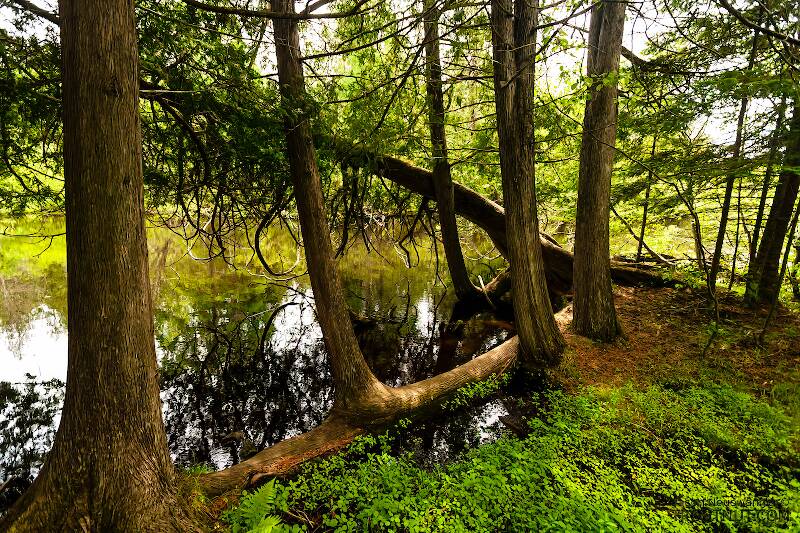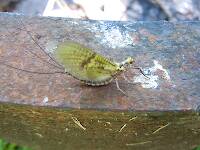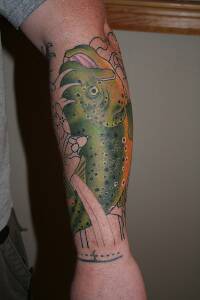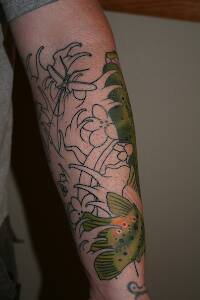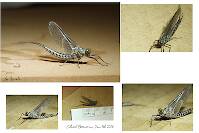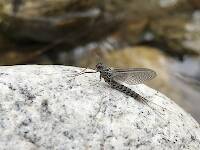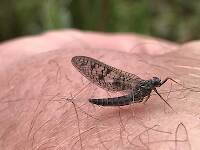
Blue-winged Olives
Baetis
Tiny Baetis mayflies are perhaps the most commonly encountered and imitated by anglers on all American trout streams due to their great abundance, widespread distribution, and trout-friendly emergence habits.
Featured on the forum

This one seems to tentatively key to Holocentropus, although I can't make out the anal spines in Couplet 7 of the Key to Genera of Polycentropodidae Larvae nor the dark bands in Couplet 4 of the Key to Genera of Polycentropodidae Larvae, making me wonder if I went wrong somewhere in keying it out. I don't see where that could have happened, though. It might also be that it's a very immature larva and doesn't possess all the identifying characteristics in the key yet. If Holocentropus is correct, then Holocentropus flavus and Holocentropus interruptus are the two likely possibilities based on range, but I was not able to find a description of their larvae.

Troutnut is a project started in 2003 by salmonid ecologist Jason "Troutnut" Neuswanger to help anglers and
fly tyers unabashedly embrace the entomological side of the sport. Learn more about Troutnut or
support the project for an enhanced experience here.
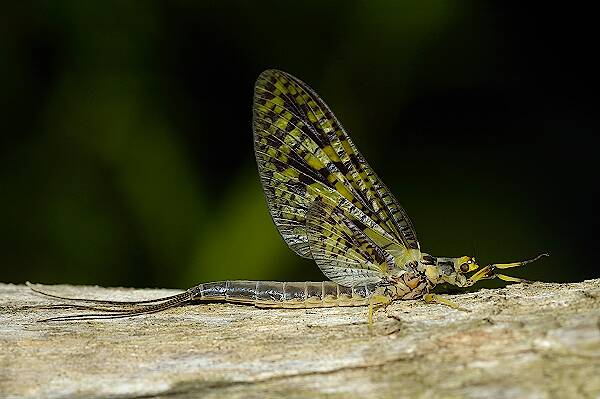
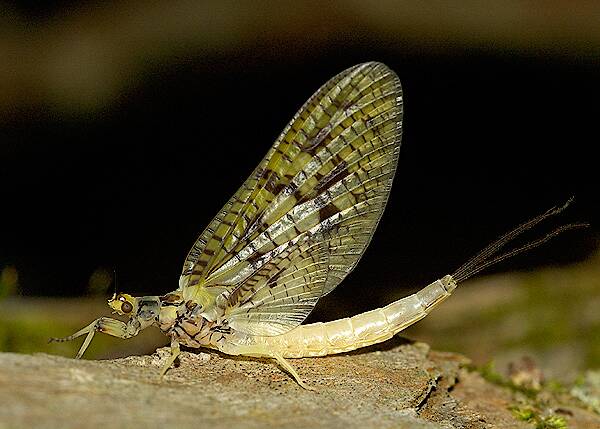
Konchu on Jun 4, 2009June 4th, 2009, 3:13 pm EDT
trying to see if one darkens or the other lightens is an excellent place to start, and I'll be anxious to hear the results; but i'm still interested to see if we could get dna out of them, and if so, what it says. thanks for trying!
NickP on Jun 4, 2009June 4th, 2009, 4:54 pm EDT


well holy cats i actually found those old photos, both male and female. i would say these were taken between 16-24 hours after i caught them on the stream. you can see the tails are elongated and the abdomen is still light on top. they were taken in 2001 and you can see the insects are on a sheet of foam rather than streamside stuff.
i also had two people tell me they saw almost no duns tonight but tons of spinners which also never fell. the hatch is likely waning and hopefully myself or someone else from the area can snag a dun or two before it's all over.
Taxon on Jun 4, 2009June 4th, 2009, 5:40 pm EDT
Hey guys,
I love this thread, and can't seem to keep my oar out of the water, even at risk of catching a crab. I believe your latest two photos to be of an Ephemera guttulata male and female spinner, rather than being duns.
I love this thread, and can't seem to keep my oar out of the water, even at risk of catching a crab. I believe your latest two photos to be of an Ephemera guttulata male and female spinner, rather than being duns.
NickP on Jun 5, 2009June 5th, 2009, 12:10 am EDT
Roger- on this i am certain, those two pics are of duns. the next day both bugs were 3/4 dead and trapped in their molted dun shucks. i remember that clearly but i did not photograph the dead spinners.
this pic of a female spinner shows how much darker and more contrasted their color becomes and the wing loses the vast majority of it's green color. you can also see the abdomen right through the hind wing. i do use flash in my photos and it does tend to reflect off the wings, making them look shinier.
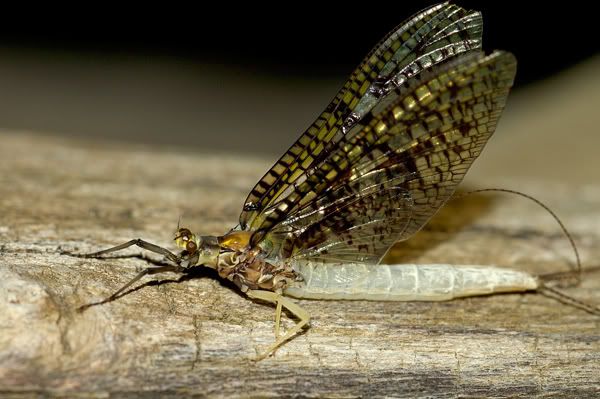
this pic of a female spinner shows how much darker and more contrasted their color becomes and the wing loses the vast majority of it's green color. you can also see the abdomen right through the hind wing. i do use flash in my photos and it does tend to reflect off the wings, making them look shinier.

GONZO on Jun 5, 2009June 5th, 2009, 2:35 am EDT
Wow, Nick, I'm sold. I've seen lots of variation in Green Drakes in the past--creamy ones, yellowish ones, grayish ones, and greenish ones--but light-backed and dark-backed duns hatching at the same time is completely new to me. I can see why Roger thought the ones in the new photos might be spinners, but the forelegs of the male are clearly those of a dun. Although I thought my more prosaic explanation might prevail, this is not just a matter of darkening. Now, I'm truly intrigued.
Please redouble your efforts to get some of these to Konchu. Thank you for sharing the photos of this very interesting and unusual population.
Please redouble your efforts to get some of these to Konchu. Thank you for sharing the photos of this very interesting and unusual population.
NickP on Jun 5, 2009June 5th, 2009, 3:20 am EDT
Lloyd and everyone thank you so much for the help with this puzzling situation. hopefully with Konchu's help we can find out for sure what they are. i will post on my site to see if someone can get us a dun to test since i'm tied up this weekend and likely won't be able to get down there till early next week.
there is another guy from my area on here, DOS. if you can help out with this little experiment i would greatly appreciate it. i think you know what stream they are from if not PM me.
there is another guy from my area on here, DOS. if you can help out with this little experiment i would greatly appreciate it. i think you know what stream they are from if not PM me.
Martinlf on Jun 10, 2009June 10th, 2009, 2:59 pm EDT
Guys, if you haven't looked at Nick's page take the time to pull it up. Some amazing photos and great fly recipes.
"He spread them a yard and a half. 'And every one that got away is this big.'"
--Fred Chappell
--Fred Chappell
Quick Reply
Related Discussions
Topic
Replies
Last Reply
6
Jun 10, 2009
by Martinlf
by Martinlf
4
Jun 17, 2020
by Leskorcala
by Leskorcala
Re: Best of the Forum--Most Useful and Informative Bug Threads Featured Topic
In General Discussion by Martinlf
In General Discussion by Martinlf
17
Feb 26, 2016
by Crepuscular
by Crepuscular
5
Dec 4, 2008
by Beardius
by Beardius

